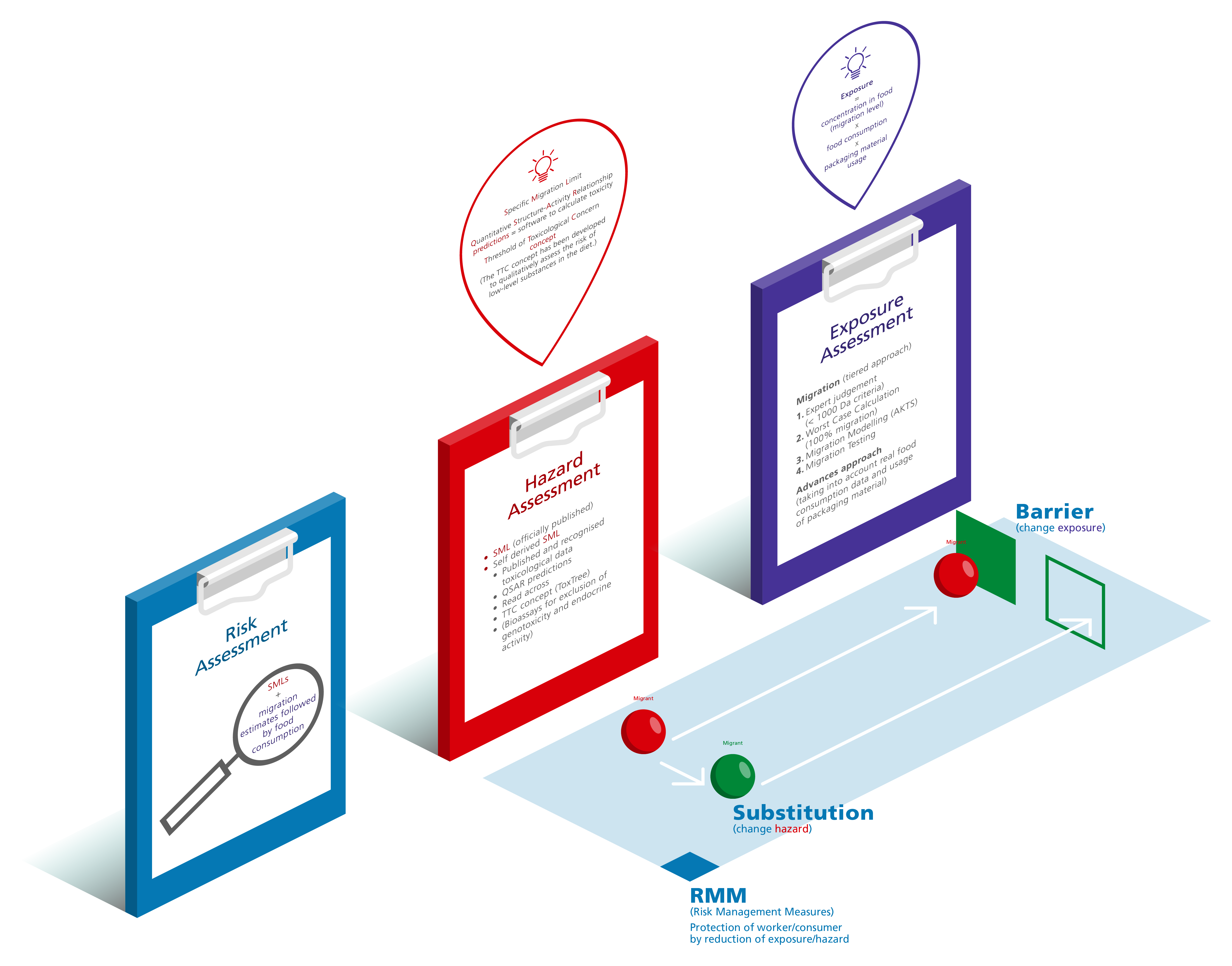Risk assessment
Every risk assessment is a case-by-case conclusion that needs to be performed and considered individually. Most importantly, any substance that can possibly migrate, e.g. in sensitive areas such as food applications, needs a risk assessment. For many substances this has already been done by authorities through defining individual SMLs (Specific Migration Limits).
Prerequisite for a risk assessment is a hazard assessment and an exposure assessment. The hazard assessment includes data gathering on the intrinsic properties of a substance by means of different sources. These properties are given, but are subject to a dose-response-relationship. Our exposure assessment, on the other hand, is in a first step a migration assessment that depends on numerous parameters, e.g. the amount of ink applied, the physical-chemical properties of a particular migrant, or the storage conditions (e.g. temperature, shelf life) of the packaging.
In the end, final exposure strongly depends on the consumer’s eating habits. More specifically, for the exposure assessment it is relevant which quantities of which food types (containing a specific migrant) are eaten by the consumer per day.
Hazard assessment
Regarding the hazard assessment, there are various sources for data collection. At Siegwerk, we have defined basic data requirements based on different applications. Our approach is Siegwerk’s global raw material introduction process (RMIP), in which information on raw materials is gathered, processed, and possible data gaps are identified. Our RMIP always includes a legal compliance check applying SMLs, if available. If SMLs are given in official European or national regulations, no further steps are required because these are based on official safety assessments. If no SML exists, our hazard assessment procedure is the basis to obtain a self-derived SML.
Here, we make use of published and recognized toxicological data or scientific tools. Important sources of information, for example, are the European Chemicals Agency, QSAR predictions or the application of Toxtree including the TTC concept. Due to this information, we are able to obtain a self-derived SML, which can be used for further risk assessments.
Exposure assessment
The exposure assessment for our migrants follows a tiered approach. It is commonly accepted that molecules with a mass lower than 1000 Dalton need to be taken into consideration for this. Our workflow consists of a worst case calculation (tier 1) under the assumption that 100% of a substance migrates, migration modeling (tier 2), migration testing (tier 3) and further refinement (tier 4) taking into account real food consumption data. If, for example, tier 1 has led to a situation in which the needed safety level has been reached, no further assessments are required.
Evaluating potential risks to human health
Both the hazard assessment and exposure assessment are indispensable. If no SML exists, our hazard assessment procedure helps to obtain a self-derived SML. The exposure assessment, on the other hand, provides migration estimates depending on the applied tier. As a conclusion, the overall risk assessment is based on the migration estimates and SMLs provided by legislation or our self-derived SMLs. Consequently, we are able to evaluate whether there is a potential risk related to human health.
Learn more about Siegwerk’s risk assessment through our infographic.


